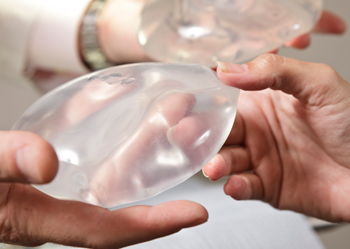Last Updated on November 12, 2023
Should I get breast implants? Are there alternatives? Will they need to be replaced?
And if I decide to get implants, which are medical devices, there are even more questions. Saline or silicone? Which style? How much monitoring is needed?
These are common questions people have when considering breast implants.
That’s why the U.S. Food and Drug Administration offers online tools to help people who are seeking information, as well as advice, when making breast decisions about breast implants.
Know the Basics
The FDA has approved implants for increasing breast size in women (augmentation), for reconstruction after breast cancer surgery or trauma, and to correct developmental defects. Implants are also approved to correct or improve the result of a previous surgery.
A number of studies have reported that a majority of breast augmentation and reconstruction patients are satisfied with the results of their surgery.
The FDA has approved two types of breast implants for sale in the United States: saline (salt water solution)-filled and silicone gel-filled. Both have a silicone outer shell and vary in size, shell thickness, and shape.
Know and Consider the Risks
FDA-approved breast implants sold in the United States are made with outer shells of medical-grade silicone and filled with silicone gel or saline. These implants undergo extensive testing to establish reasonable assurance of safety and effectiveness.
Nonetheless, there are risks associated with all breast implants, including:
- additional surgeries
- breast implant associated-anaplastic large cell lymphoma (BIA-ALCL), a cancer of the infection-fighting cells (lymphocytes) of the immune system
- capsular contracture, which is scar tissue that squeezes the implant
breast pain - rupture (tears or holes in the shell) with deflation of saline and silicone gel-filled implants
- silent (without symptoms) rupture of silicone gel-filled implants
Note: The silicone used for breast implants is different than injectable silicone. Injectable silicone is not FDA-approved for body contouring.
If you’re considering breast implants, here are five tips:
1. Recognize that breast implants are not lifetime devices. The longer people have them, the greater the chances that they will develop complications, some of which will require more surgery. The life of breast implants varies by person and can’t be predicted. That means everyone with breast implants will face additional surgeries—but no one can tell them when. And while a few people have reportedly kept their original implants for 20 to 30 years, that is not the common experience. Patients can also request additional surgeries to modify the aesthetic outcome, such as size or shape.
2. Review product labeling. The FDA advises that people look at the Summary of Safety and Effectiveness Data (SSED) for each implant to learn about their characteristics and the fillers used. SSEDs have been produced for all approved saline and silicone gel-filled breast implants. These summaries provide information on the indications for use, risks, warnings, precautions, and studies associated with FDA approval of the device. They also provide information on how often serious complications occurred. The most serious complications are those that lead to further surgeries, such as ruptures or capsular contracture.
The FDA advises health care providers to give people the full product labeling—all of the patient information from the manufacturer—for implants. You should ask your surgeon for the most recent version of the labeling. You should count on needing at least 1 to 2 weeks to review the information before making a decision. If you have questions about any of these documents, talk to your surgeon.
3. Communicate with the surgeon. Surgeons must evaluate the shape, size, surface texture, and placement of the implant and the incision site for each person. Ask the surgeon questions about his or her experience in performing breast implant surgery, the surgical procedure, and the ways the implant might affect your life.
Also, tell the surgeon about previous surgeries and your body’s response—for example, whether surgeries resulted in a larger than expected amount of scar tissue—and discuss your expectations. This discussion helps the surgeon make operative decisions that achieve the desired appearance, including decisions about incision location and size as well as implant size, material, and placement. Many people have additional operations to change implant size. To achieve the best results after the first procedure, careful planning and reasonable expectations are necessary.
4. Learn about long-term risks. The FDA has identified an association between breast implants and the development of anaplastic large cell lymphoma (ALCL), a type of non-Hodgkin’s lymphoma. People who have breast implants may have an increased risk of developing ALCL in the fluid or scar tissue surrounding the implant. Remember, like other lymphomas, ALCL is a cancer of the immune system and not of breast tissue.
Although some women with implants may have experienced health problems such as connective tissue diseases (such as lupus and rheumatoid arthritis), trouble breastfeeding, or reproductive problems, current evidence does not support an association between breast implants and these conditions.
5. Know that monitoring is important. In general, follow your health care provider’s instructions on how to monitor your breast implants.
If you notice any unusual signs or symptoms, report these changes promptly to your health care provider. (When time allows, please also consider reporting any serious side effects to MedWatch, the FDA’s safety information and adverse event reporting program.)
Also follow your health care provider’s instructions for breast self-examinations and routine mammography screening for breast cancer. And make sure to inform the mammography facility that you have breast implants so enough time is scheduled for your mammogram.
Your health care provider may also recommend other tests, such as magnetic resonance imaging (MRI). The FDA recommends that people with silicone implants get MRI screenings to detect silent ruptures three years after their surgery and every two years after that.
More About the FDA’s Online Resources
The FDA has a web page on breast implants (www.fda.gov/breastimplants) with resources that include:
- links to patient information and data for each product
- information about risks and complications
- questions to ask health care providers regarding breast implant surgery
- contact information for manufacturers of FDA-approved breast implants and related professional organization
Please visit this webpage for more information. And if you have specific questions about breast implants, or questions about your health, please talk to your health care provider.
Updated: March 21, 2018








